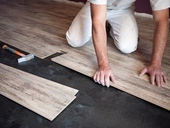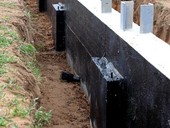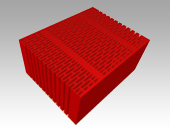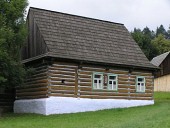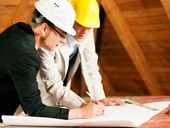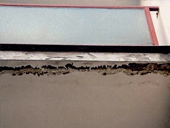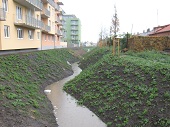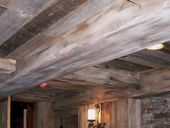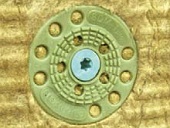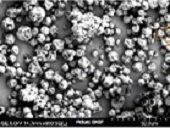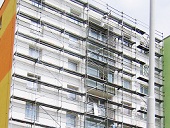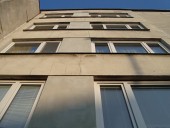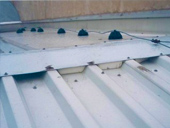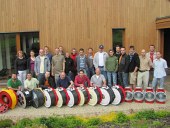Company Betonconsult held in September for the sixth annual conference FLOORS, complemented by the issue of surface treatments. The conference is an annual source of unique information on the best solutions and latest innovations in the field. This year the most important topic was draft changes to the standard ČSN 74 4505th The paper provides the text marked with the standards proposed amendments. You can join the comments. Strike through text is proposed for deletion, underlined for completion.
Archiv článků od 13.12.2010 do 10.10.2011
Causes of failures and errors in building basement are worse distinguishable than causes of errors of building above ground. For the poor, sometimes even impossible access to the basement and the underlying structure, the method of remediation is difficult. Humidity is one of the most feared cause of failures.
Causes of failures and errors in building basement are worse distinguishable than causes of errors of building above ground. For the poor, sometimes even impossible access to the basement and the underlying structure, the method of remediation is difficult. Humidity is one of the most feared cause of failures.
The paper focuses on the differences between equivalent thermal conductivities of the masonry from hollow bricks in vertical and in both horizontal directions. Recent CFD studies presented the ratio between thermal conductivities in vertical and in horizontal direction (perpendicular to the surface of the masonry). This study shows the relation between thermal conductivities of the masonry in both horizontal directions.
Excessive moisture may be the objects of wooden folk buildings have a negative effect on all the wooden structures, which are these objects formed. This is because if any of the wooden elements has excessive humidity, there is a risk of assault at his wood-destroying biological pests (wood-decaying fungi, wood-destroying insects, rot and mold).
Sloping roofs meet today not only the function of protection from the rain. Use attic space for residential purposes made them cladding, which must withstand moisture influences from both the exterior and the interior. Frequently discussed issue is the composition of construction and materials used. These two factors strongly affect the hygrothermal regime in construction and thus the quality of the internal microclimate.
Experience of construction supervision show that expectations for the revitalization and rehabilitation of housing, which includes regeneration or at least repair of residential buildings are not completely fulfilled in practice. At the same time shows how the robust technical supervision for quality of work is important.
Family houses belong among the simple structures that are usually built with a classical way. Although the technology of construction is not difficult, it is possible for gross neglect of basic technological practices and the protection of buildings during construction to cause such damage, which is difficult to repair, even for the increased financial costs. Evidence of this is an example of one family house for individual living in the suburb of Prague on the basis of expert opinion.
In this article, structural design of selected parts of the dewatering system of the living com-plex is described, the impact of construction procedure on particular parts of the living com-plex is discussed and first experience from the operation of the dewatering system is menti-oned. Further, the expert opinion of selected manager is added and the principles of service regula-tions are presented.
The aim of the research was to determine the effect of chemical degradation of the surface layers of wooden structural elements to their mechanical properties and depth to which the damage extends. Degradation of the surface layer of wood structural elements caused a chemical reaction of some compounds contained in the fire in the past repeatedly coatings applied to wood structures of historical buildings. Such chemicals include ammonium sulphate and ammonium phosphate.
In January I published an article about the upcoming revision of CSN 73 0540-2 Thermal protection of buildings, Part 2: Requirements. I expressed to changes in each individual chapter. Since then there is new development in the standard revision. Some comments by members of the Standardisation Committee No. 43 and by professionals from the April public consultation of the standard were implemented. Some chapters of the standard are nearly unchanged since January, but some have changed in fairly major way.
One of the important functional properties of ETICS is the stability on the substructure after construction into the building. The paper deals with the CSN 73 2902, which specifies requirements for the design and use of ETICS, which consists thermal insulation boards made of expanded polystyrene or mineral wool.
Coloured photovoltaic cells are occasionally used in architectural applications. Their wider utilisation is currently limited by the lower efficiency compared to cells with an optimal anti-reflective coating. Research is focused on desing and manufacturing of anti-reflective coating, which besides of required color will have minimised the reflection in the infrared.
Currently, in the EU, the demand for new organic materials based on rapidly renewable natural sources is increasing. These materials are not only used for the new low energy and passive buildings, but also in existing buildings, specially during their renovations. Unlike those commonly used today, these natural materials have acoustic insulation properties, which make them ideal to be used on the insulation of floating floors. The paper deals with a comprehensive assessment of the insulation properties of hemp based materials, which can be used in floating floors, specially in terms of their acoustic insulation properties and also in terms of the total utility properties of these floating floors.
The article describes some of the results of the research project R&D SP3g522107 – Full renovation of panel buildings in the low energy standard, which was carried out by EkoWATT with the support of the Ministry of the Environment in the years 2007-2010. One of the main instruments described is the parametric model, which allows the evaluation of a large sample of virtually generated building probabilistic methods, a case study of a renovation of a panel building to a passive standard using a grant with a 8 year investment return and also, an internet application that easily allows to add a panel building to a computer model and test the effects of the saving measures.
The current market is over saturated with different technologies and products that promise to rocket return, versatile use and effect for everyone. As it is the truth is a complicated thing and this article does not even look for it. Each technology certainly has its place, but if the specifications is thoroughly examined. The aim is (on a simple example) to compare seemingly incomparable. Custom effect of insulation of the facade versus applications of controlled ventilation with heat recuperation in classic family house.
Corrugated sheets placed on girders are very often used in industrial construction as roof envelopes. However, their application is sometimes accompanied by failures namely both from dewatering point of view and heat-moisture regime in roof envelope. As example is demonstrated the roofing of steel hall with saddle roof and parapet and valley gutters which is analyse in this paper. The paper is also documented by the calculation of rainwater-flow by deflected gutter and it is completed by the design of maintenance.
Among other things, the new version of the EPBD calls for more substantial improvements in the energy performance of buildings – gradual, until up to almost zero level by 2020. Such buildings are not likely to be feasible without high-efficiency ventilation systems, the proper functioning of which is conditional to an excellent airtightness of the building. Relevant experts from all over Europe understand that ensuring the conditions for the gradual improvement of airtightness in common building practices is a common challenge and task.
zpět na aktuální články
